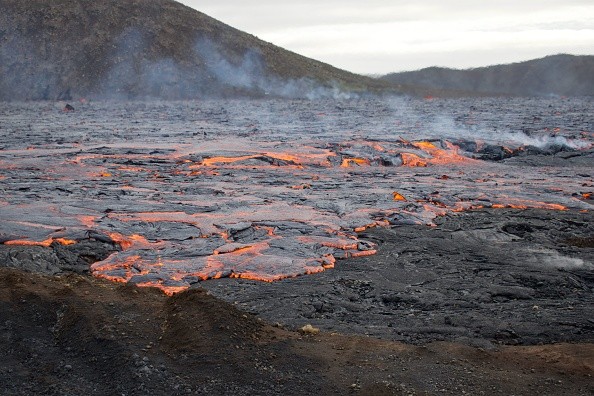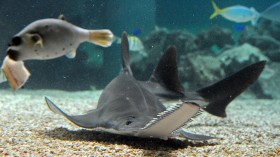Both scientists and nature lovers around the world have been fascinated by the latest Fagradalsfjall eruption in Iceland's southwest.
The eruption was particularly significant because it gave geologists a rare chance to examine magmas that ultimately came from the Earth's mantle but had managed to accumulate in a depth crustal magma reservoir (below 20 km).
Iceland's Volcanic Eruption
 (Photo : JEREMIE RICHARD/AFP via Getty Images)
(Photo : JEREMIE RICHARD/AFP via Getty Images)

Icelandic volcanoes frequently make headline news in international media, such as the infamous Eyjafjallajökull in 2010, which also temporarily halted all air travel over Europe by spurting ash into the atmosphere, and the most recent media sensation Fagradalsfjall, which erupted in 2021, as per Visiticeland.
Since Iceland is one of the most volcanically active regions on the planet and eruptions typically take place every four years, if a volcano is not erupting, we probably did not have to wait too long for the next.
However, the length of eruptions varies greatly; they can last anywhere from a few seconds or hours to several months or years.
Icelandic eruptions can range in size from small effusive eruptions, where lava flows relatively silently from cracks and crater rows to large volcanic explosions in central volcanoes covered in ice, which send up huge ash plumes.
Iceland's geological location, where a continues to spread plate boundary on the Mid-Atlantic Ocean ridge interacts with a strong mantle plume to produce a hot spot on the surface, is what causes the country's intense volcanic activity.
Around each other, they generate a lot of magma, which fills the cracks left by the spreading plates in the crust and causes frequent volcanic activity along the rift zone.
Read More: Volcanic Eruption: New Study Finds Water Affects Magma Depth
Fagradalsfjall Eruption
The University of Oregon, Uppsala University, University of Iceland, and Deutsches GeoForschungsZentrum (GFZ) research group took advantage of this rare effort to acquire lava samples in a few days in order to create a time-integrated sample catalog and to meticulously track the geochemical evolution all through the eruption, as per Sciencedaily.
When studying past eruptions, volcanologists typically have a narrow perspective of the erupted materials; for instance, older lava flows may be full or partially buried by newer ones.
But at Fagradalsfjall, the eruption was just so carefully observed and sampled those researchers were able to record the development of an Icelandic eruption almost in real-time.
The group was fascinated by oxygen isotopes. Because isotope ratios of oxygen, which make up about 50% of all volcanic rocks, are particularly sensitive tracers of the mantle and crustal material properties.
In this form, oxygen isotopes can assist scientists in figuring out whether magma is derived from the mantle or if it came into contact with crustal materials on the way to the surface.
Simply stated, according to geochemical findings, the most recent Icelandic eruption was fueled by magmas that came from various Earth mantle sources, each of which had unique elemental properties.
The oxygen isotope ratios in each of these domains were identical, which astounded the scientists. This outcome was exceptional and had never been seen at an active eruption before.
We can better understand mantle dynamics and improve mantle models for Iceland using the study's fresh and convincing evidence for distinct mantle-sourced magmas to have uniform oxygen isotope ratios.
Related Article: Bulusan Volcano Spews Ash During Phreatic Eruption; Alert Level 1 Raised
© 2024 NatureWorldNews.com All rights reserved. Do not reproduce without permission.
![Severe Thunderstorm Alert: Tornadoes, Damaging Winds and Hail Possible from Upper Ohio Valley to Northeast US [NWS]](https://1471793142.rsc.cdn77.org/data/thumbs/full/70161/280/157/50/40/severe-thunderstorm-alert-tornadoes-damaging-winds-and-hail-possible-from-upper-ohio-valley-to-northeast-us-nws.jpg)




